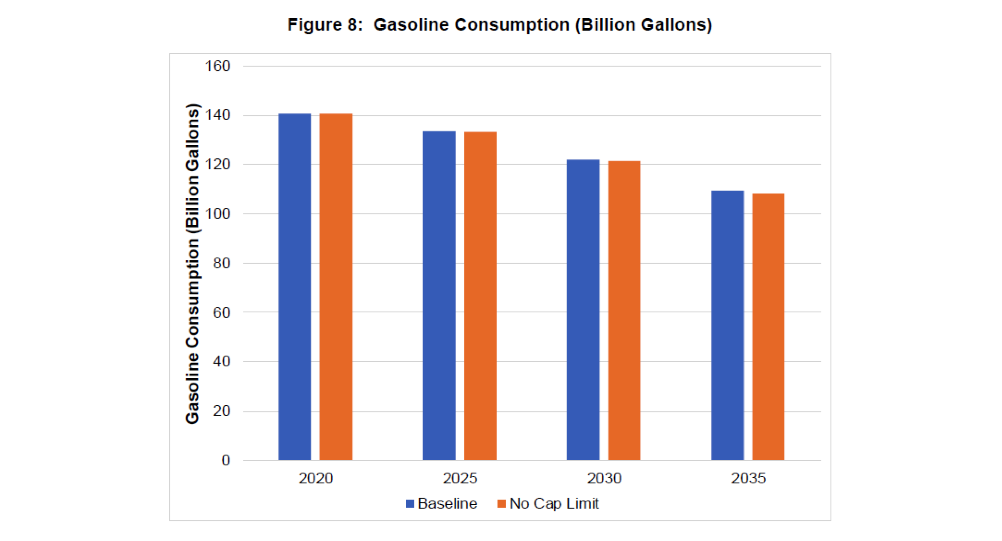Several members of Congress are considering a bill to expand the tax credit for electric vehicles, despite its cost and unfairness to low-income Americans. Electric vehicles are more expensive than gasoline vehicles and mostly upper-income Americans are purchasing them, meaning the benefits of the tax credit are not for the general good of the American people. The electric vehicle tax credit offers purchasers a subsidy of up to $7,500 off the price of a qualifying electric vehicle. The credit gradually phases-out for manufacturers that exceed 200,000 vehicle sales in the United States.
Some auto manufacturers (General Motors and Tesla) have reached the 200,000 threshold and other companies are also approaching the cap. To remove the 200,000 vehicle limit on the electric vehicle tax credit would cost $95 billion over the next 15 years. The credit, as originally designed, is expected to cost an estimated $7.5 billion from 2018 to 2022.
The Tax Credit
Electric vehicle tax credits are a result of the Energy Improvement and Extension Act of 2008 (H.R. 6049) and The American Recovery and Reinvestment Act of 2009 (ARRA) that provide Federal income tax credits for new qualified electric vehicles ranging from $2,500 to $7,500 per vehicle. The tax credit begins to phase out for a manufacturer’s vehicles when at least 200,000 qualifying vehicles have been sold in the United States.
The NERA Study
NERA was commissioned to analyze the effects of removing the manufacturers’ vehicle cap, i.e., extending the tax credit in perpetuity without changing consumer preferences or vehicle characteristics. Eliminating the manufacturers’ cap on the tax credit induces greater sales of electric vehicles by reducing the buyer’s up-front costs. Other study assumptions include that:
◙ The shortfall in government tax revenues resulting from funding the tax credit program would be funded by taxing households, and
◙ The electric vehicle infrastructure development costs would be recovered through an increase in electricity rates or through a fixed charge.
Under the study assumptions, the total stock of electric vehicles is projected to increase by 1.4 million vehicles in 2025 and 10.2 million vehicles in 2035–about 38 percent higher in 2035–relative to a base case in which the current cap remains in effect. By 2035, the stock of electric vehicles is projected to increase from a 10 percent share of new vehicle sales in the base case with the cap in effect to a 13 percent share in the case where it is removed.
Impacts on energy markets are small because new vehicle sales are a tiny portion of the total vehicle stock and many years are required for the vehicle stock to turn over. If the cap is eliminated, electricity demand is projected to increase by 5 terawatt-hours in 2025 and 30 terawatt-hours in 2035—0.7 percent higher in 2035 than in the base case. Correspondingly, gasoline demand is expected to decline by 0.8 percent in 2035 (78 thousand barrels a day, or 1.2 billion gallons per year). That reduction is very small when compared to a 25 percent reduction in gasoline consumption expected from fuel economy improvements in internal combustion vehicles projected over the same time period.

Although consumers benefit from lower gasoline bills, consumers ultimately pay for the tax credit and investment in electric vehicle infrastructure directly and indirectly. As a result, consumers have less money to spend and reduce their consumption of other goods and services.
In net, the policy’s costs would more than outweigh the consumers’ financial savings. Total personal income of all U.S. households would decrease by $7 billion in 2020 and $12 billion in 2035, which is equivalent to about $50 to $70 per household per year between 2020 and 2035. Between 2020 and 2035, the net present value reduction in personal income of all U.S. households would be about $95 billion or about $610 per household, saddling electric utility ratepayers with $3.6 billion in additional costs related to energy production and charging infrastructure needed to support the increase in electric vehicles.
Distributional Impacts
In 2016, of the 57,066 individual taxpayers who received the electric vehicle tax credit, 78 percent had at least a six-figure income and 7 percent reported more than $1 million in income. As an example, Tesla’s customers have an average household income of $293,200. In 2014, less than 1 percent of all electric vehicle tax credits went to households earning less than $50,000, which means that about half of Americans receive virtually no benefit from the tax credit.
Climate Impacts
The Manhattan Institute found that electric vehicles will reduce energy-related U.S. carbon dioxide emissions by less than 1 percent by 2050, which will have no measurable impact on the global climate. According to the International Energy Agency, if there were 300 million electric cars with the current power generation system, the impact on carbon dioxide emissions would be less than 1 percent. In its projections, however, the International Energy Agency expects only 125 million electric vehicles by 2030—less than half the number required to have any measurable effect.
Conclusion
The Congress should not expand the electric vehicle tax credit since it will only cost Americans more, benefit mainly wealthy Americans, and have a negligible impact on global carbon dioxide emissions. Tax credits are meant to help industries get off the ground; they are not, in theory, meant to provide a permanent crutch that has very little impact on energy markets and the environment.



